Key takeaways:
- Threat assessment is vital for identifying and evaluating potential risks, encompassing both physical dangers and emotional intelligence.
- Common threats include theft (internal and external), cybersecurity vulnerabilities, and workplace violence; proactive measures can mitigate these risks.
- Effective threat assessment requires ongoing evaluation, team collaboration, and the use of appropriate tools, such as risk assessment software and data collection methods.
- Implementing prevention strategies, including employee training and community collaboration, enhances overall security and fosters vigilance within the organization.
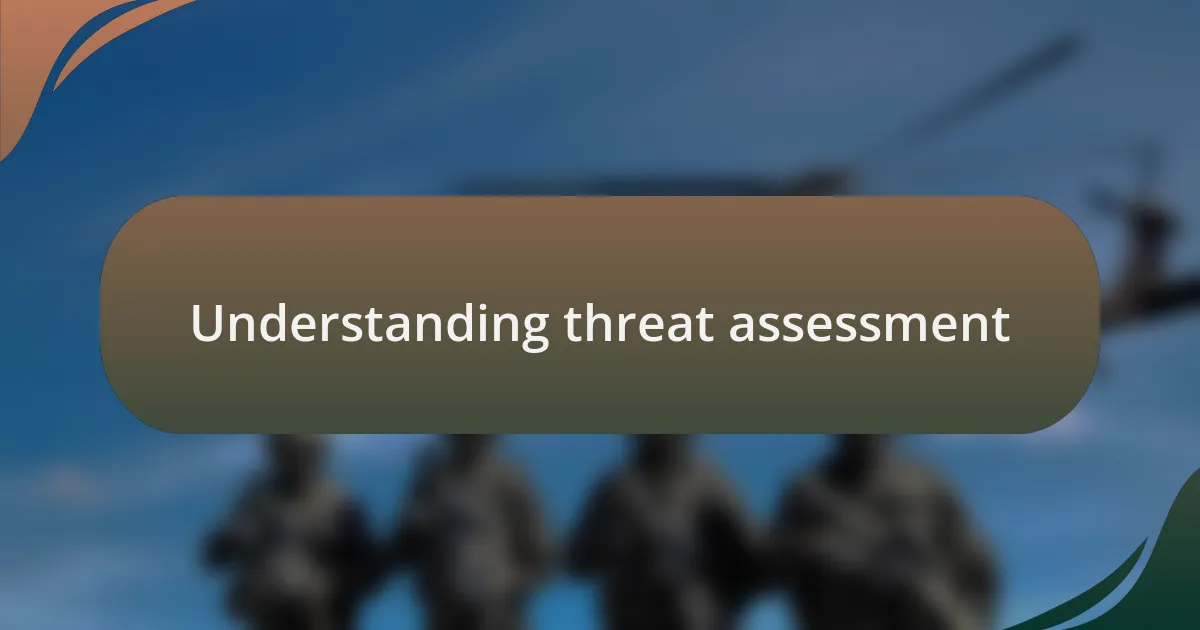
Understanding threat assessment
Threat assessment is a method that systematically identifies and evaluates potential risks, focusing on specific threats to an organization. Early in my career, I encountered a situation where an employee expressed concerning behavior. It raised a question for me: How do we determine whether these signals indicate a real threat or just temporary distress? This is where a thorough assessment becomes vital.
In my experience, the process involves gathering information from multiple sources, such as behavioral observations or historical data. I remember a case where we analyzed past incidents of theft and found a pattern that revealed underlying vulnerabilities in our security measures. Identifying these patterns helped us not only to prevent future crimes but also to foster a culture of awareness within the organization.
Understanding threat assessment is not just about recognizing physical dangers; it’s also about emotional intelligence. When I worked on a team to assess employee interactions, I often reflected on how an individual’s stress could manifest into security risks. What if we could address these stressors proactively? This perspective shifted our approach to creating a safer working environment, ultimately leading to better employee morale and increased productivity.
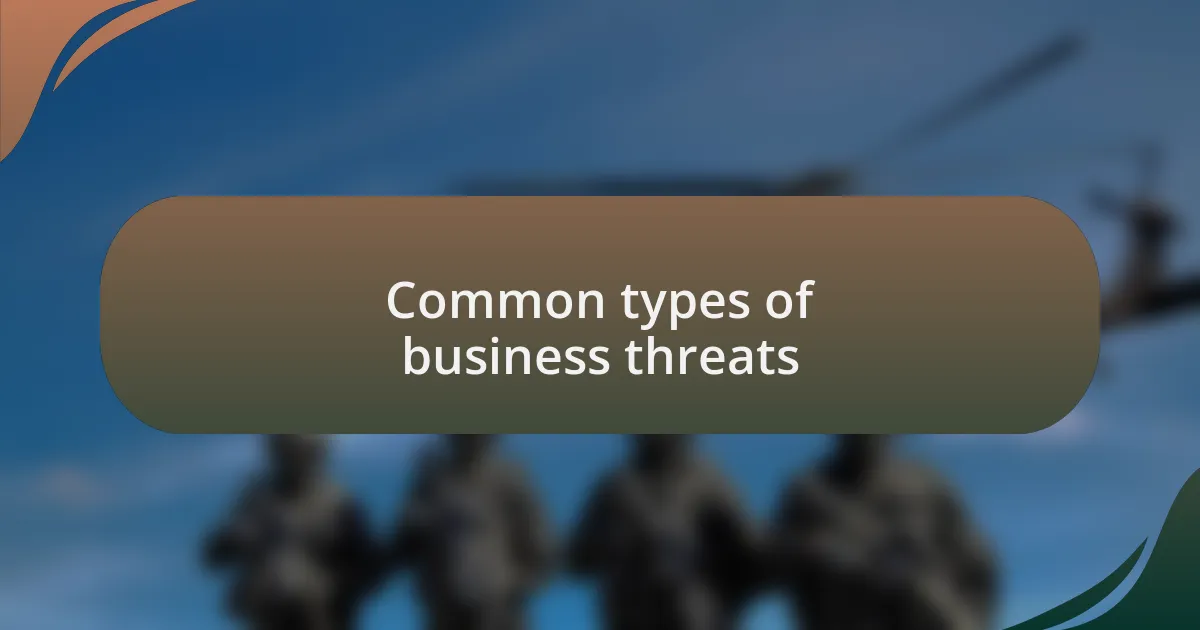
Common types of business threats
One of the most common threats businesses face is theft, whether it be internal, like employees pilfering supplies, or external, such as shoplifting. I recall a time when a colleague noticed discrepancies in inventory. After some investigation, we discovered a series of minor thefts that added up significantly over time. It taught me that even seemingly small issues can indicate larger vulnerabilities within an organization.
Cybersecurity threats have surged in today’s digital age, making online attacks a critical concern for businesses. I once worked with a company that suffered a data breach, which not only compromised sensitive customer information but also damaged their reputation. How do you recover from something like that? In my opinion, investing in robust cybersecurity measures and training employees to recognize phishing scams is non-negotiable.
Another threat that often flies under the radar is workplace violence. While it may not always come to mind, I’ve seen how unresolved conflicts can escalate into dangerous situations. One day, a heated argument between two employees led to a temporary shutdown of operations. It made me question: are we doing enough to foster a culture of open communication and conflict resolution? By prioritizing these discussions, businesses can mitigate such risks before they escalate into potential threats.
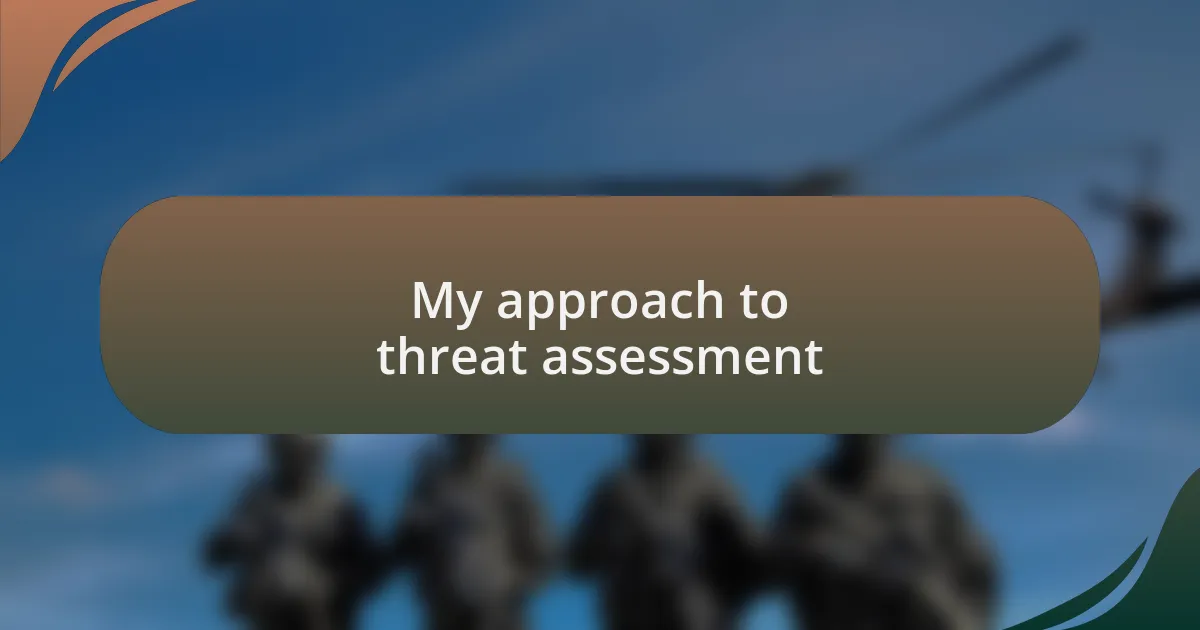
My approach to threat assessment
My approach to threat assessment starts with recognizing that each business is unique, and so are its vulnerabilities. In my early days with a startup, we conducted team brainstorming sessions to identify potential risks. Those discussions opened my eyes not only to the obvious threats but also to hidden weaknesses that we had overlooked. I learned that involving everyone in the conversation fosters a sense of shared responsibility for security.
I always look at threat assessment through a proactive lens. There’s a moment I vividly remember when we implemented regular audits to review both physical and digital security measures. The simple act of revisiting our protocols led to the discovery of outdated software that could have left us exposed to cyber threats. It made me think: are we too often caught up in the daily grind to reassess our defenses? Staying vigilant and adaptable is crucial.
Lastly, I emphasize that threat assessment is not a one-time task, but rather an ongoing process. I recall a situation where we had to pivot our strategy due to an unexpected spike in local crime rates. By continuously analyzing our environment and remaining flexible, we developed a quicker response plan that significantly improved our overall safety. This taught me that our approach needs to evolve as new threats emerge, ensuring we are always prepared for what lies ahead.
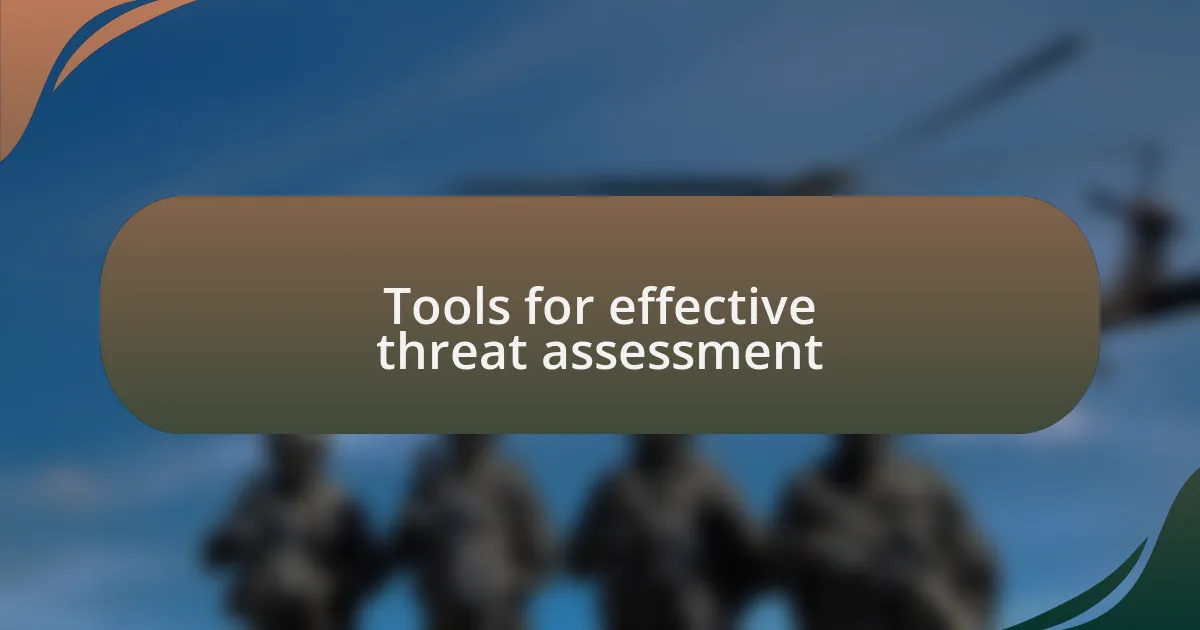
Tools for effective threat assessment
Effective threat assessment relies on the right tools, and I’ve found that software solutions can significantly streamline the process. In one instance, we used risk assessment software to visualize potential vulnerabilities across our operations. It was a game changer; seeing everything laid out in front of us made it much easier to prioritize our resources effectively. Have you ever seen a problem become so much clearer when you have the right tool?
In addition to software, I’ve learned that a team collaboration platform can be invaluable. By facilitating ongoing discussions about threats among team members, we created a shared space for input and suggestions. During one of these discussions, a staff member pointed out an overlooked entry point that often went unmonitored. It’s moments like these that reinforce the importance of open communication in building a comprehensive security strategy.
Data collection tools have been pivotal in my threat assessment journey as well. I recall a project where we used analytics to track and identify patterns in suspicious activities around our premises. The insights gained not only informed our immediate security enhancements but also helped us to allocate resources more smartly over time. How are you gathering data to support your threat assessment efforts? The answers might surprise you.

Lessons learned from my experiences
Through my experiences, I’ve come to appreciate the importance of flexibility in threat assessment. There was a time when my team and I were fixated on a specific threat model that we believed was the most relevant. However, when an unexpected incident occurred, we realized that we had to adapt quickly and rethink our approach entirely. This taught me that being too rigid can blind you to emerging threats; it’s essential to remain open-minded and ready to pivot.
Another key lesson I learned is the power of hindsight in shaping future strategies. Early in my career, I underestimated the impact of a seemingly minor incident until it escalated into a more significant problem. This experience was a wake-up call, underscoring the need for thorough follow-ups and analyses. Reflecting on past incidents not only helps in understanding patterns but also equips us to anticipate future vulnerabilities. Have you taken time to reflect on your past experiences in threat assessment?
I’ve also discovered that fostering a culture of vigilance within the organization is invaluable. On one occasion, we organized a workshop aimed at enhancing awareness among employees. One participant shared their observations about unfamiliar faces frequenting our premises. This not only highlighted the importance of engaging every team member but also strengthened our collective responsibility towards security. How often do we tap into the collective awareness of our teams? It’s often the most unassuming voices that hold vital insights.
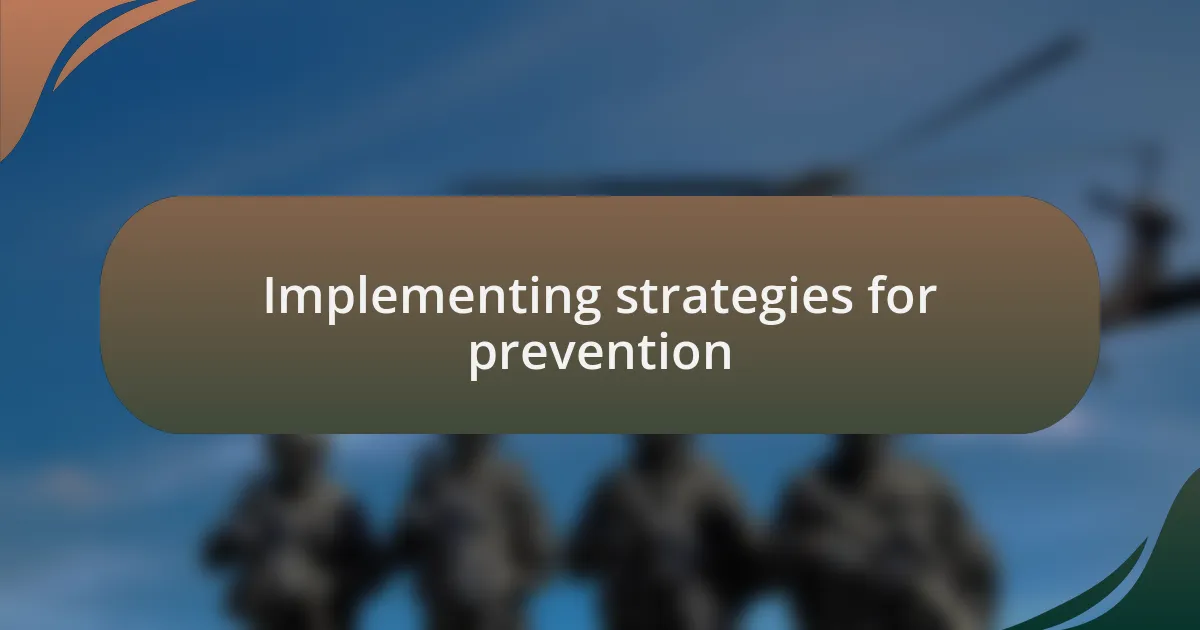
Implementing strategies for prevention
When implementing strategies for prevention, it’s crucial to prioritize training for all employees. I remember a situation where we conducted a security drill that revealed a shocking lack of awareness about emergency protocols among staff. It was eye-opening to see how a simple lack of knowledge could compromise safety. Have you ever felt that rush of realization? Investing in regular training sessions not only empowers employees but also fosters a culture of proactive engagement in security measures.
Another strategy I found effective involves leveraging technology to enhance monitoring capabilities. During a particularly challenging project, we integrated surveillance software that utilized AI to detect unusual behavior patterns in real-time. This technology not only helped in identifying potential threats more quickly but also provided peace of mind. Have you considered how technology could amplify your prevention strategies?
Moreover, I’ve seen firsthand the benefits of community collaboration when addressing threats. In one instance, we partnered with local law enforcement to conduct joint workshops for businesses in our area. It was rewarding to see the conversations flow, with attendees sharing their experiences and insights. Isn’t it amazing how collaboration can uncover resources and knowledge we might otherwise overlook? Building relationships can significantly enhance our prevention strategies by creating a united front against crime.